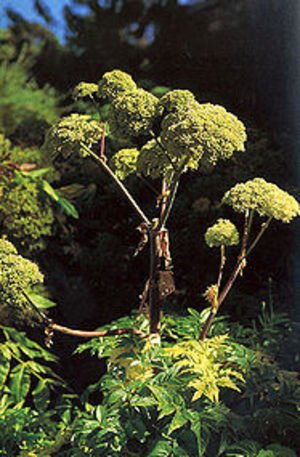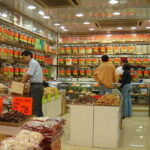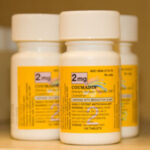I know, you think Angelica is a lovely name for a beautiful baby girl and so do I. But did you know that Angelica, a plant and herb also goes by the name. In China, Angelica plants are part of a species of herbs grouped under the name, Dang-qui or dong-quei or dong-quai, that are the number two herb of choice for the Chinese people. . Number one is still ginseng, a topic for another day.
Angelica is an ancient herb that thrives and prefers the cold and moist climates of northern China and northern European countries like Scotland, Finland, Norway, Sweden, even Iceland.
Wikipedia tells us that it’s scientific name is (Angelica archangelica) and describes the plant as a biennial or perennial herb that can grow to be six feet tall. It’s name derives from folklore attributing that Gabriel, the arch angel, shared the plant with humans as a healing herb.
It’s always amazing to me when the ancient folklore of a plant fits modern analysis of the plant and in Angelica’s case, it’s one health giving plant in many ways. It’s easy to see why it was so prized amongst the ancients.
I read in Heinerman’s, Fruit, Trees, Plants and Herbs, that the folklore of all North European countries used angelica, “as a protection against contagion, for purifying the blood and for curing every conceivable malady possible.” It was even known to be part of the treatment for bubonic plague.
Botanical. Com gives a recipe for an Angelica tea that was used as part of that treatment. It actually sounds quite lovely, especially when you consider that Angelica, known for it’s almost licorice tasting root, is used in making several alcoholic beverages, including abstinthe, Vermouth and Chartreuse. Drink up with this recipe!
Angelica Solution
‘Pour a quart of boiling water upon 6 oz. of Angelica root cut up in thin slices, 4 oz. of honey, the juice of 2 lemons and 1/2 gill of brandy. Infuse for half an hour.”
It could be the brandy that does the work in the above tea!
So what’s in the herb, Angelica or Dong Quai? Is it a hoax or does it contain miraculous healing properties and provide genuine relief for women with menstrual or menopause problems, as Chinese herbalist have prescribed for generation? Why should we use Angelica or know about it?
I was somewhat familiar with Angelica through the Donq Qaui capsules, but when I began actually researching Angelica, I was amazed at the historic lore of Angelica as a plant and all the uses for Angelica in our modern world.
What is in Angelica
Angelica contains coumarins which are white crystalline compounds with a vanilla like odor to them. That explains the flavoring aspects of Angelica. These coumarins are used to reduce edema, or swelling, especially in the lymph nodes, and swelling associated with arthritis.
These compounds could be what aids relieve pre-menstrual symptoms and menopausal hot flashes in the popular Dong Quai capsules. Every village herblorist in the Middle Ages had women drink Angelica Tea to relieve those symptoms. It was called the Woman’s Herb for those reasons.
Angelica also contain bergapten, which aids in treating skin disoreders, and it contains linalool and borneol, two ingredients that are antibacterial and antifungal. Hence, it’s popularity to heal infections and diseases, even the Bubonic Plague!
In other words, Angelica truly is a little drugstore in a plant!
It’s still used in many medicines for its medicinal values, including over the counter cough syrups for its expectorant values.
After closely studying Angelica, I can value the history and folkore behind it but realize that it’s not a common herb to be grown for daily use in my garden.
Still love the name though, Angelica; the natural herb that soothes the savage heart of women and leaves them feeling positively angelic!
Resources used in research
Botanical.com
Wikipedia
All Nature



